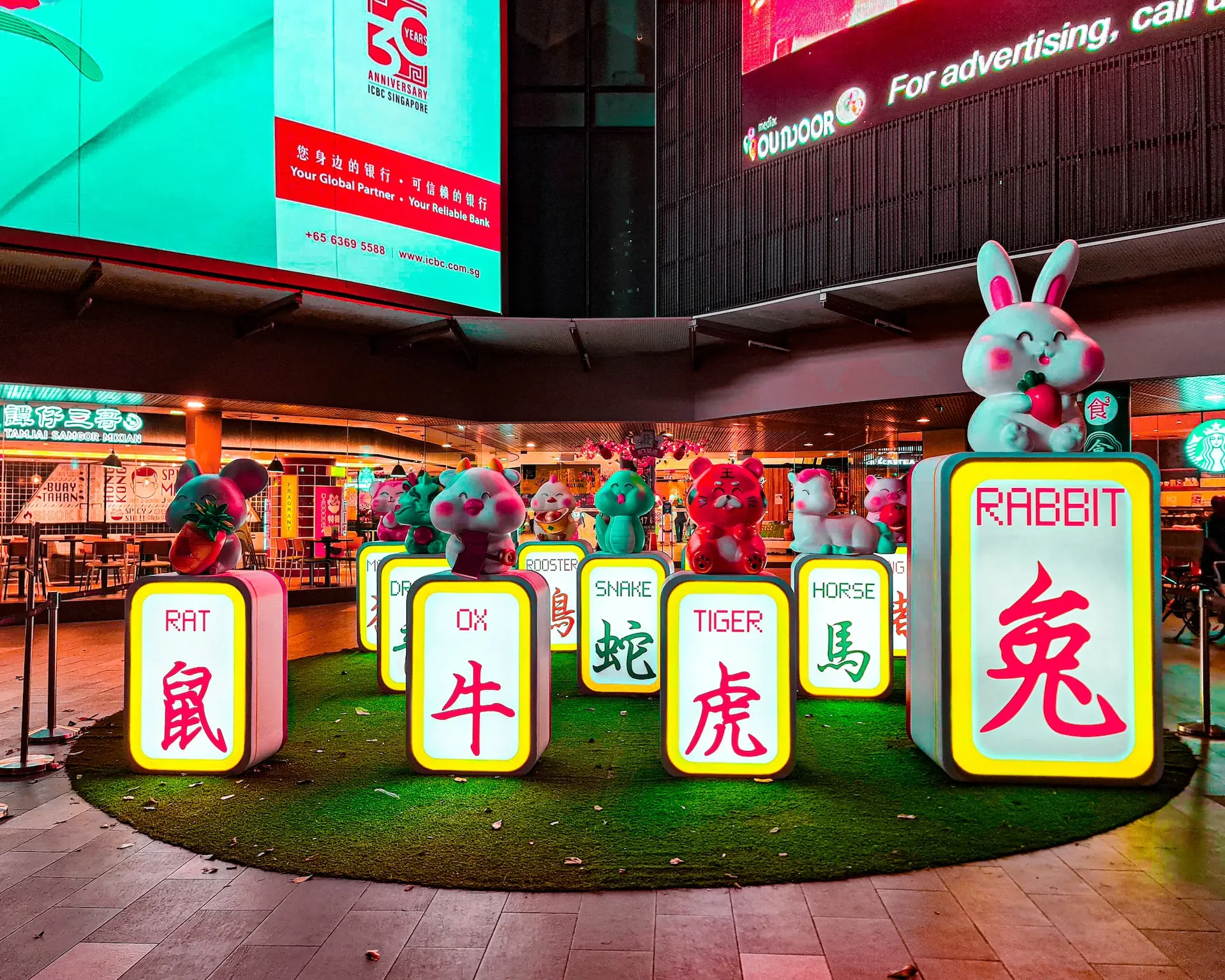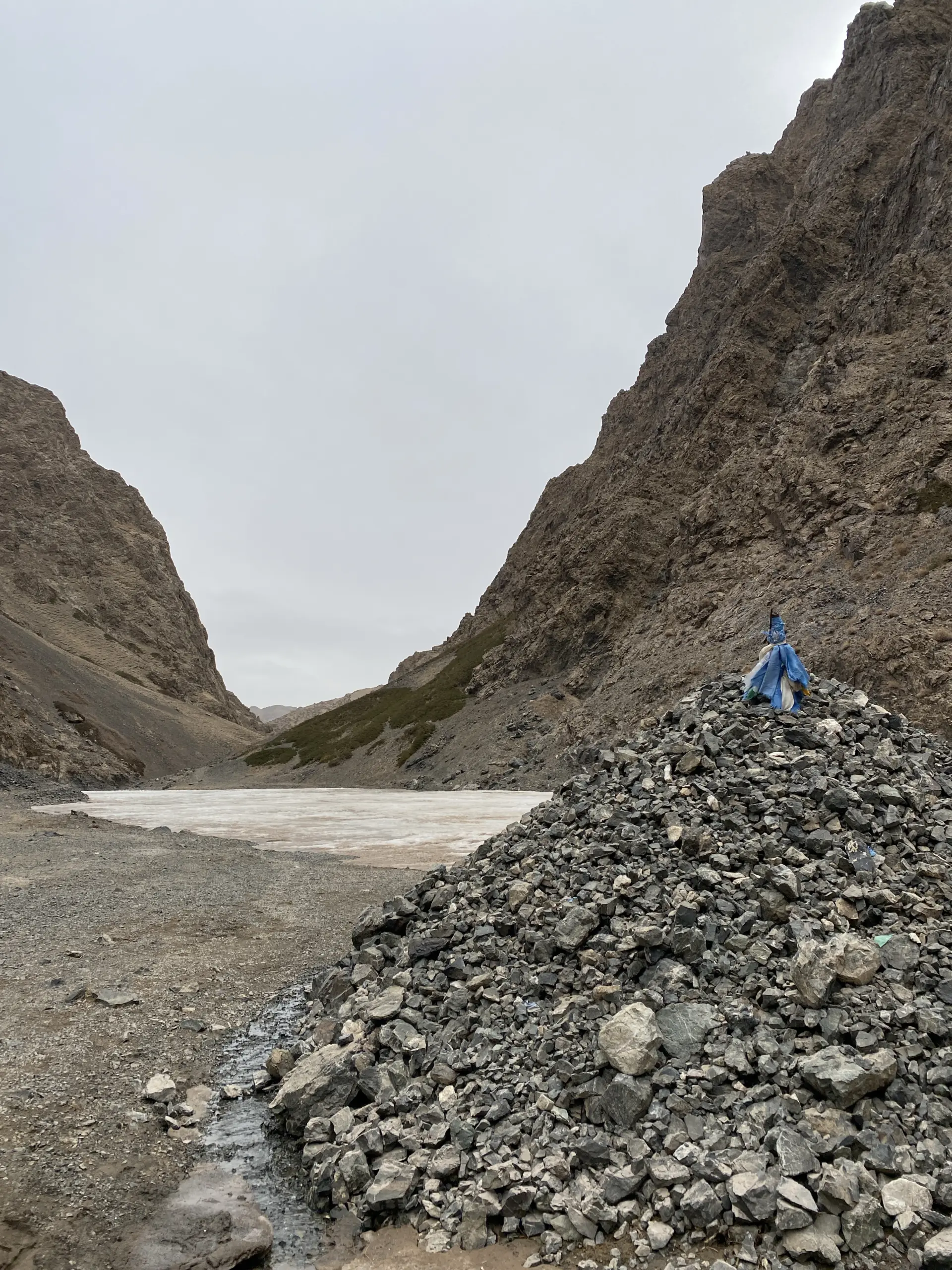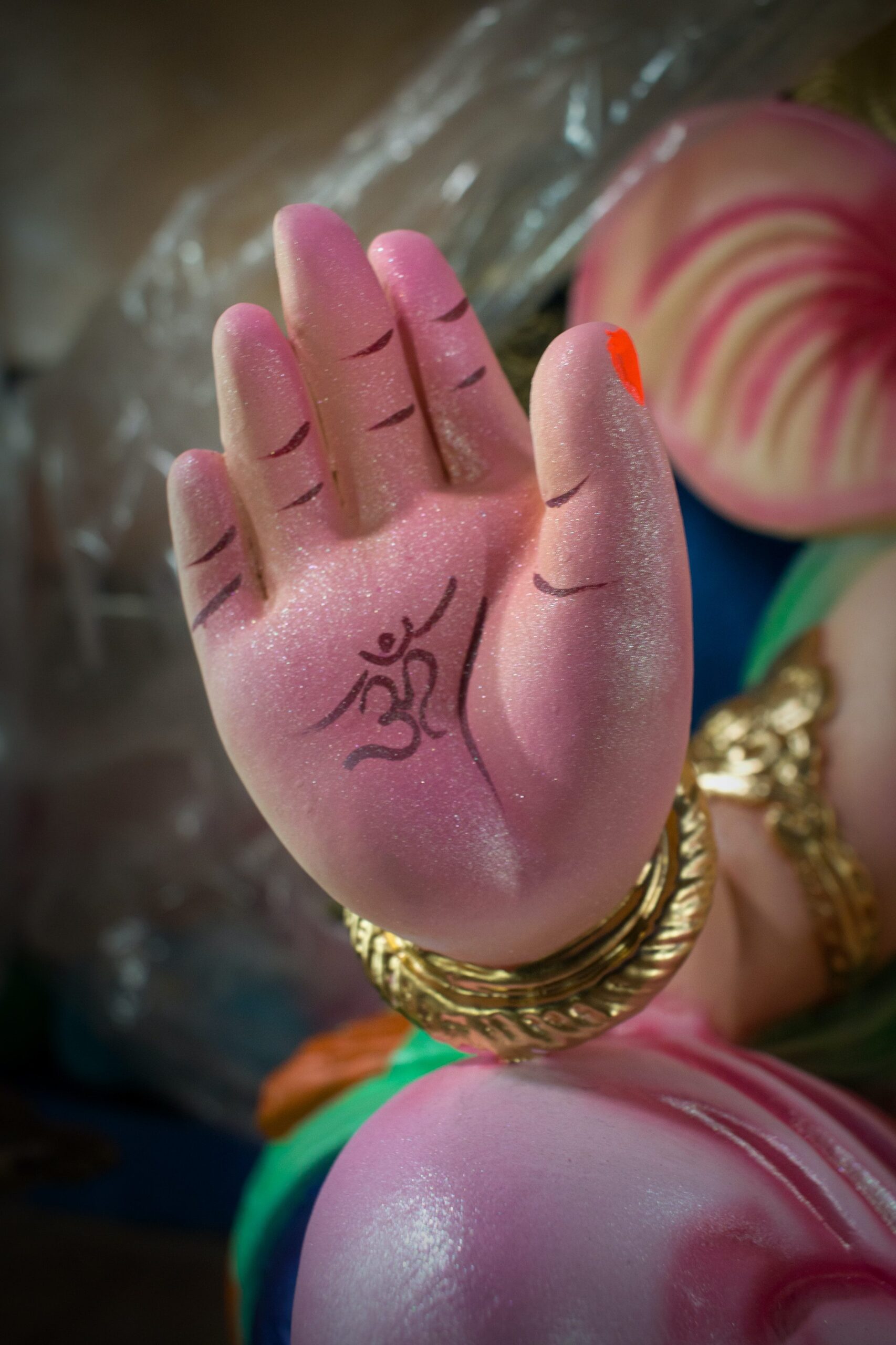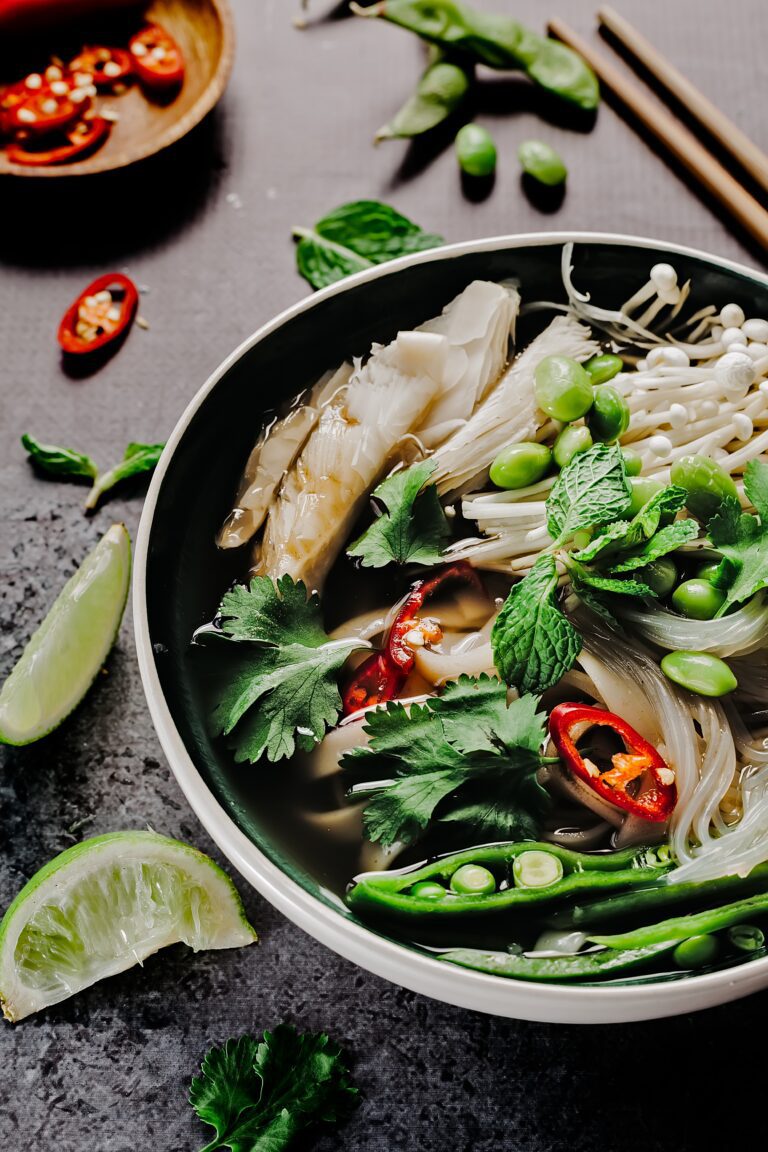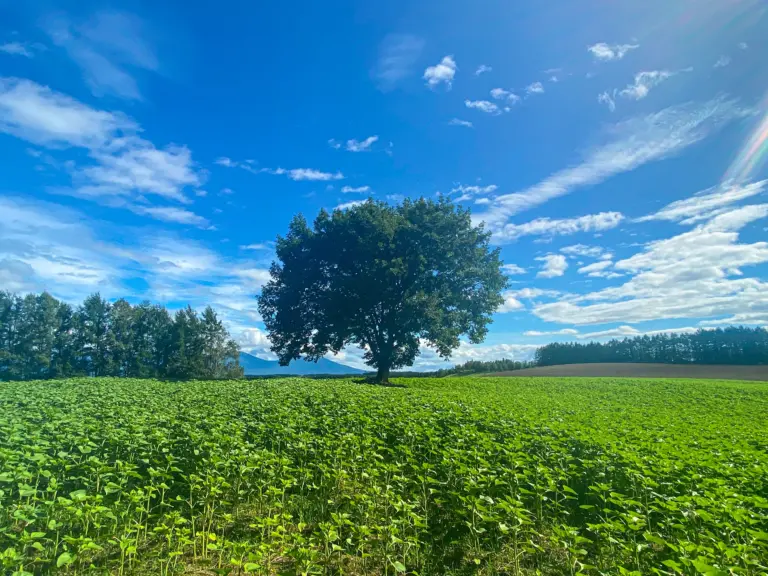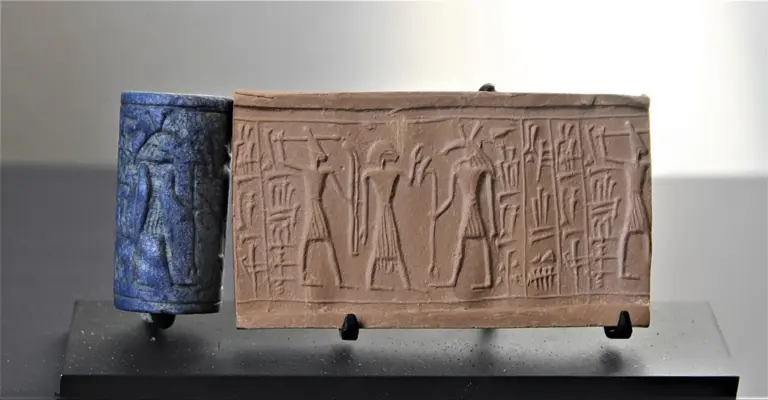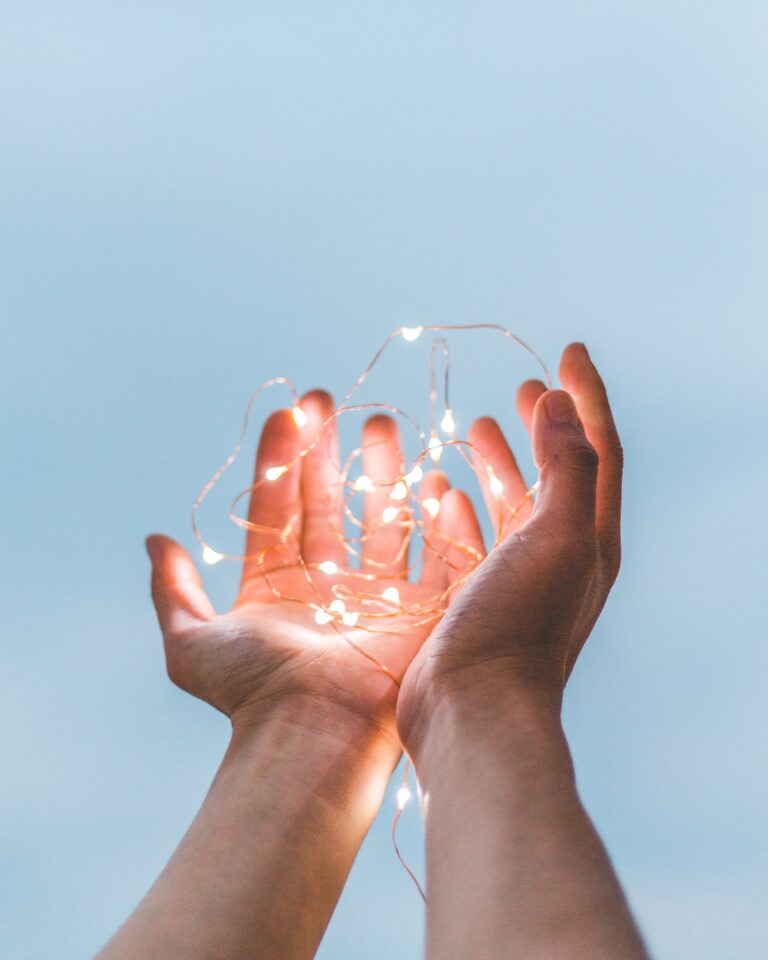Miyajima, the Island of Gods.
Nestled in the tranquil waters of the Seto Inland Sea, Miyajima is a place where myths come to life and nature whispers ancient tales. And if you’re visiting Hiroshima, then this island is not to be missed.
Central to Miyajima’s magic is the iconic Itsukushima Shrine with its famous floating torii gate. This majestic red gate, rising from the waters, has stood as a silent guardian for centuries, creating a mesmerizing sight that seems to bridge the human and the divine.
But the enchantment of Miyajima doesn’t end at the water’s edge. The island is also home to friendly, free-roaming deer, regarded as sacred messengers by the local Shinto traditions. These gentle creatures wander the island’s forests and streets, and are quite used to humans!
If you’re looking for a mystical realm where the sacred and the scenic blend seamlessly, then make your way to Miyajima as it will no doubt captivate your heart.
Table of Contents
Toggle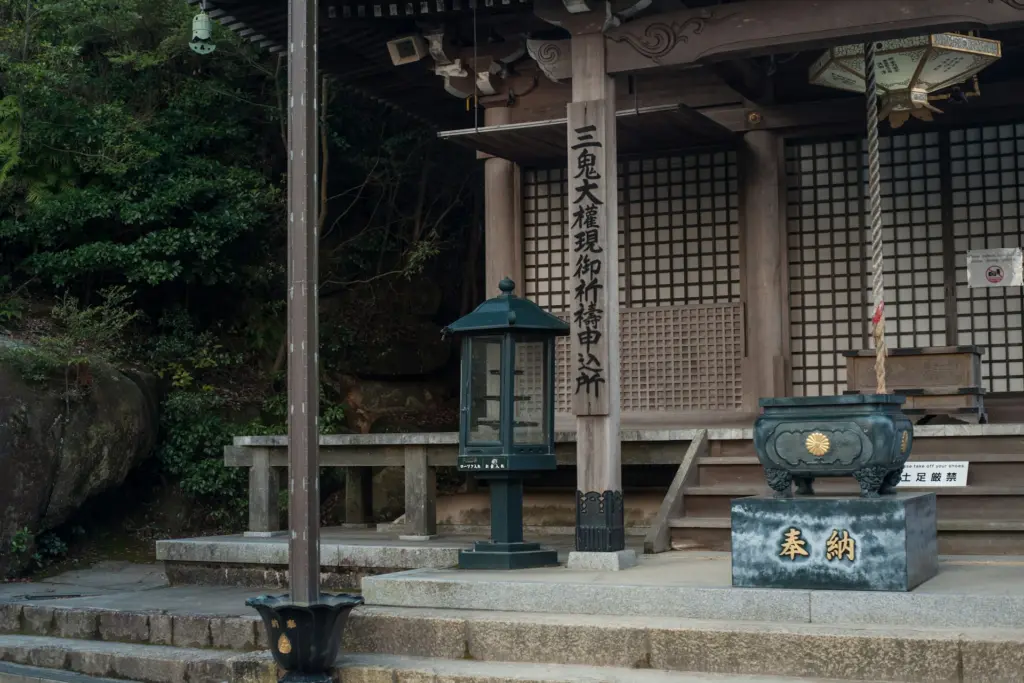
History of Miyajima Island
Miyajima Island, officially known as Itsukushima, comes with a story that intertwines the mystical and the historical.
This serene island in the Seto Inland Sea has been a sacred site since ancient times!
According to records, the Itsukushima Shrine was established in the 6th century, although the current structure dates back to the 12th century. The shrine, particularly its torii gate, was built over the water to respect the belief that the island itself was sacred, and to maintain its purity by not disturbing the land.
Its status was further solidified by the Taira clan, a powerful samurai family in the late Heian period, who became patrons of the shrine.
In fact, Miyajima’s unique significance led to a ban on births and deaths on the island to maintain its purity. And in 1996, the Itsukushima Shrine, along with the island’s natural areas, was designated as a UNESCO World Heritage Site.
Top Things to Do on Miyajima Island
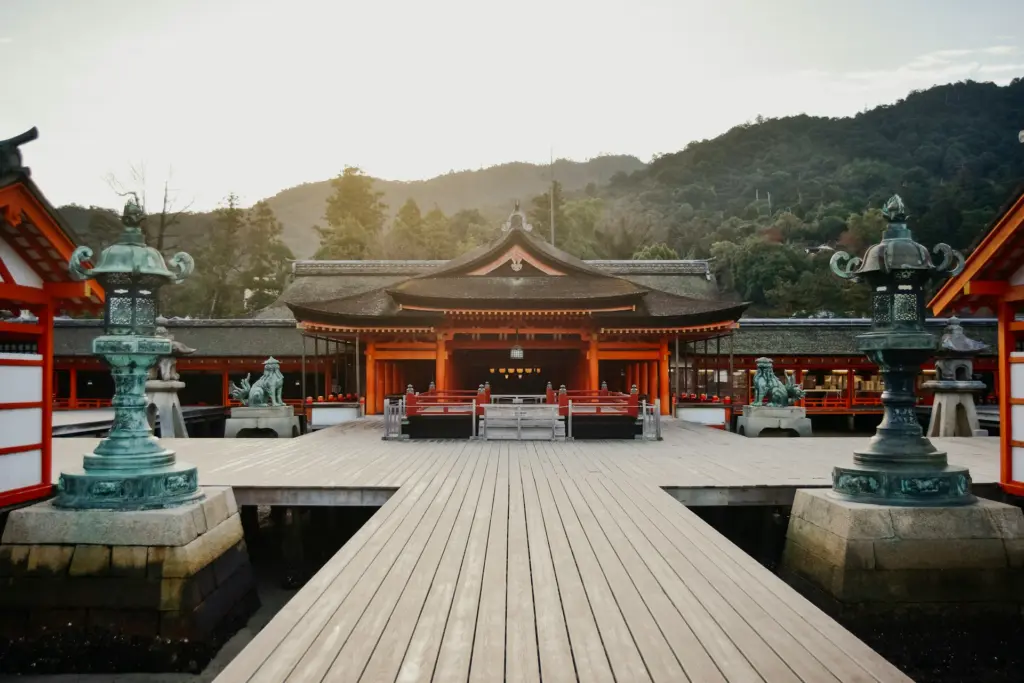
1. Marvel at Itsukushima Shrine
This iconic Shinto shrine, dating back to the 6th century, is most famous for its “floating” torii gate, which at high tide appears to be standing on the water!
The Itsukushima shrine is dedicated to the three daughters of Susano-o no Mikoto: Ichikishimahime no mikoto, Tagorihime no mikoto, and Tagitsuhime no mikoto. Otherwise known as the sanjoshin, these Shinto deities are the goddesses of seas and storms.
When we visited before around 2020, it was still under construction so we couldn’t even see it at that time but after 2022 it’s back and stronger than ever.
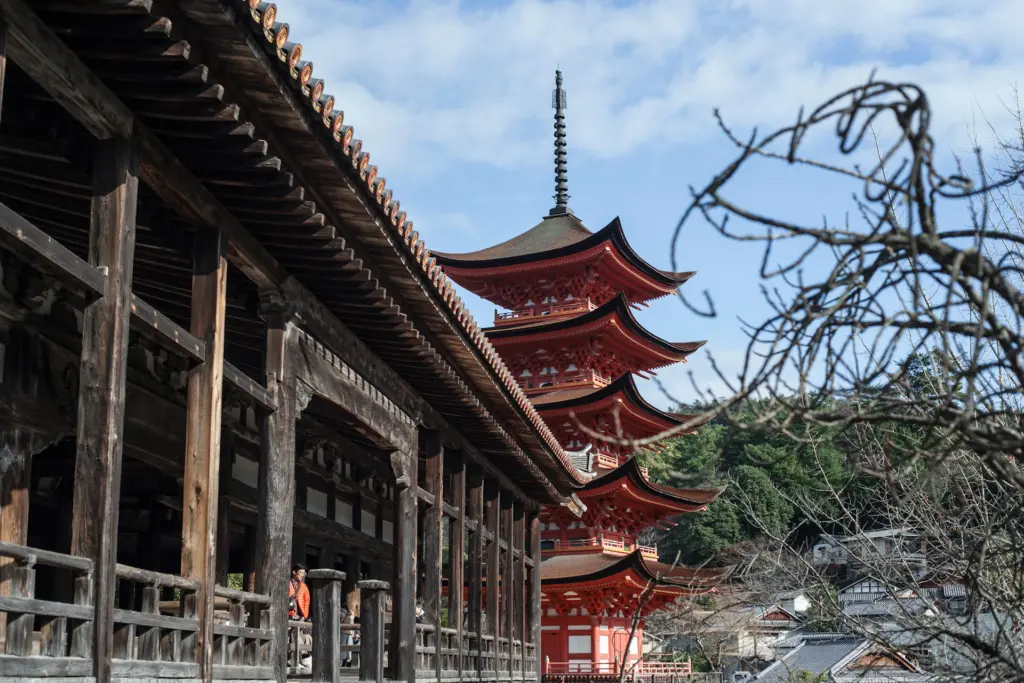
2. Admire Goju-no-to
Goju-no-to, or the Five-Storied Pagoda, is a striking pagoda that dates back to 1407, Goju-no-to is an exquisite example of traditional Japanese architecture.
Its design is influenced by both Japanese and Chinese architectural styles. The pagoda stands at an impressive height of 27.6 m (91 ft), with each of its five stories symbolizing elements of the earth – earth, water, fire, wind, and sky, in ascending order.
Despite its towering height, Goju-no-to is designed with a unique structural integrity that has allowed it to withstand numerous earthquakes and typhoons over the centuries. The interior of the pagoda, though typically not open to the public, is said to house a statue of the Buddha along with other sacred relics.
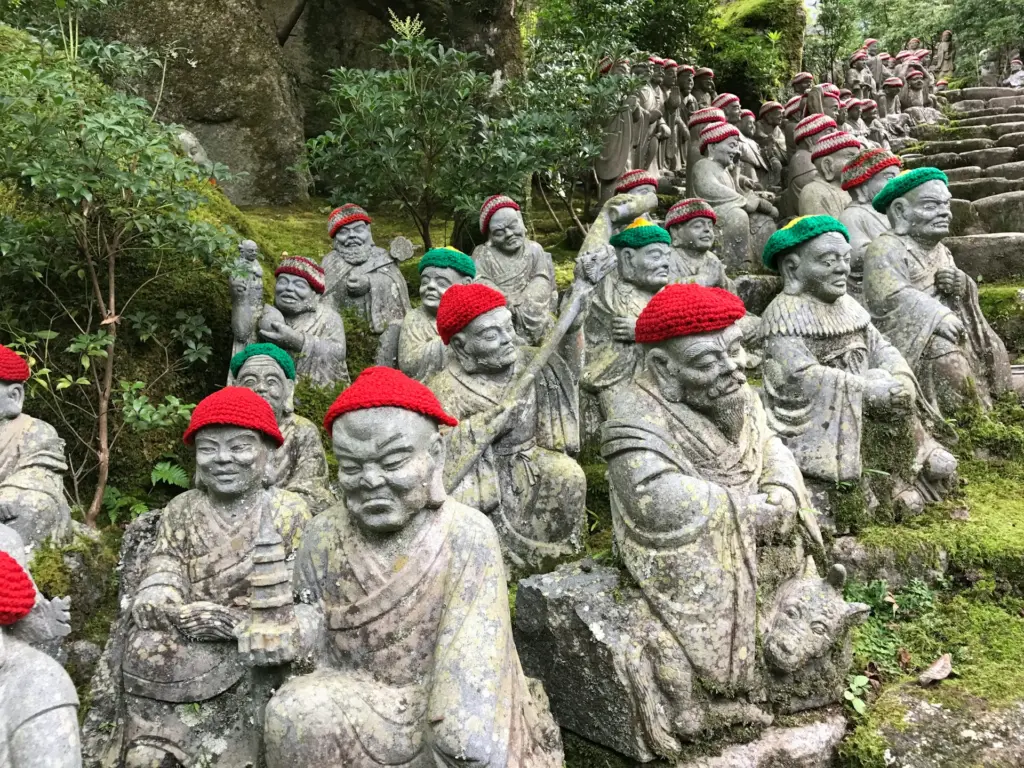
3. Unwind at Daisho-in Temple
Daisho-in Temple is one of the most important Shingon Buddhist temples in Japan.
Established in 806 AD by the revered monk Kobo Daishi, Daisho-in Temple has a rich history intertwined with the development of Buddhism in Japan.
As you enter Daisho-in, you are greeted by a series of steps lined with hundreds of small statues representing the disciples of Buddha. Each statue has a distinct facial expression, similar to the 10,000 Buddha Monastery in Hong Kong. You might even spot the smaller statues depicting the Three Wise Monkeys!
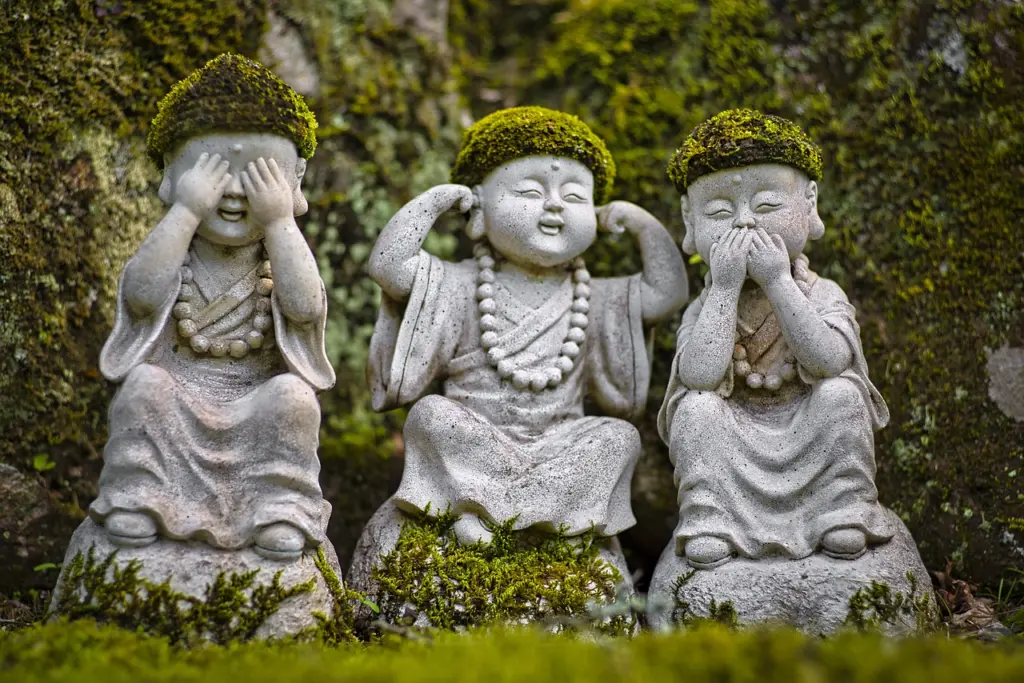
The temple is home to several notable features, including the Kannon-do Hall, the Maniden Hall, and a cave filled with 88 icons representing the temples of the Shikoku Pilgrimage, another important Buddhist journey in Japan.
One of the most striking practices at Daisho-in is the spinning of the prayer wheels. Lining the temple’s pathways, these wheels inscribed with sutras release blessings as they are turned. Prayer wheels are pretty rare in Japan, I’ve seen them in Kamakura as well but they are particularly found in Vajrayana Buddhist countries such as Nepal and Mongolia.

4. Explore Momijidani Park
The name “Momijidani” translates to “Maple Valley,” a fitting name for a park that’s home to over 200 maple trees. In autumn, these trees transform the valley into a vibran reds, oranges, and yellows. A scene you’ll remember forever if you visit around that time.
Besides its natural beauty, the park is also known for being a starting point for hikes up Mt. Misen. Several trails begin in Momijidani Park, winding through forests and offering varying levels of difficulty for hikers.
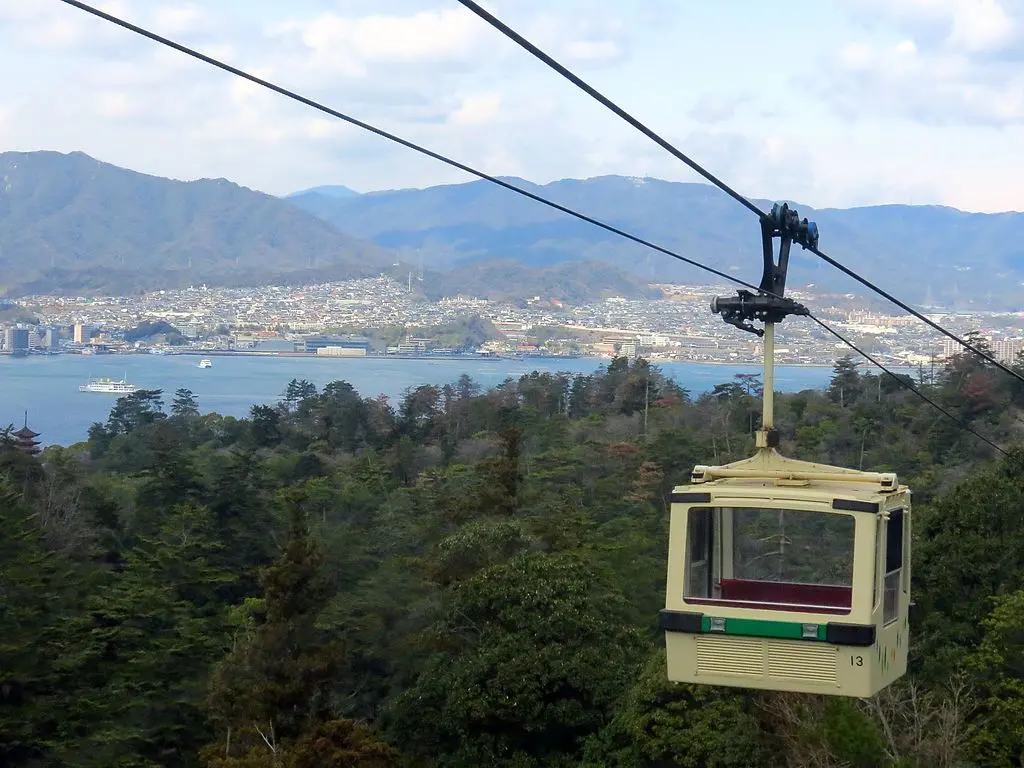
5. Ride the Miyajima Ropeway
This scenic ropeway is a popular way to reach the summit of Mt. Misen if you’re not keen on hiking.
The ropeway journey is divided into two sections. The first section, from the Miyajima Ropeway Shishiiwa Station to Kayatani Station, is a pleasant ride in a large gondola. The second section, from Kayatani to Shishiiwa Observatory, uses smaller gondolas and offers even more dramatic scenery as you ascend higher up the mountain.
As you glide up the mountain, the cabins provide a 360-degree view of the surrounding natural beauty. The vistas of the densely forested valleys, the sparkling waters of the Seto Inland Sea, and the distant islands are truly mesmerizing.
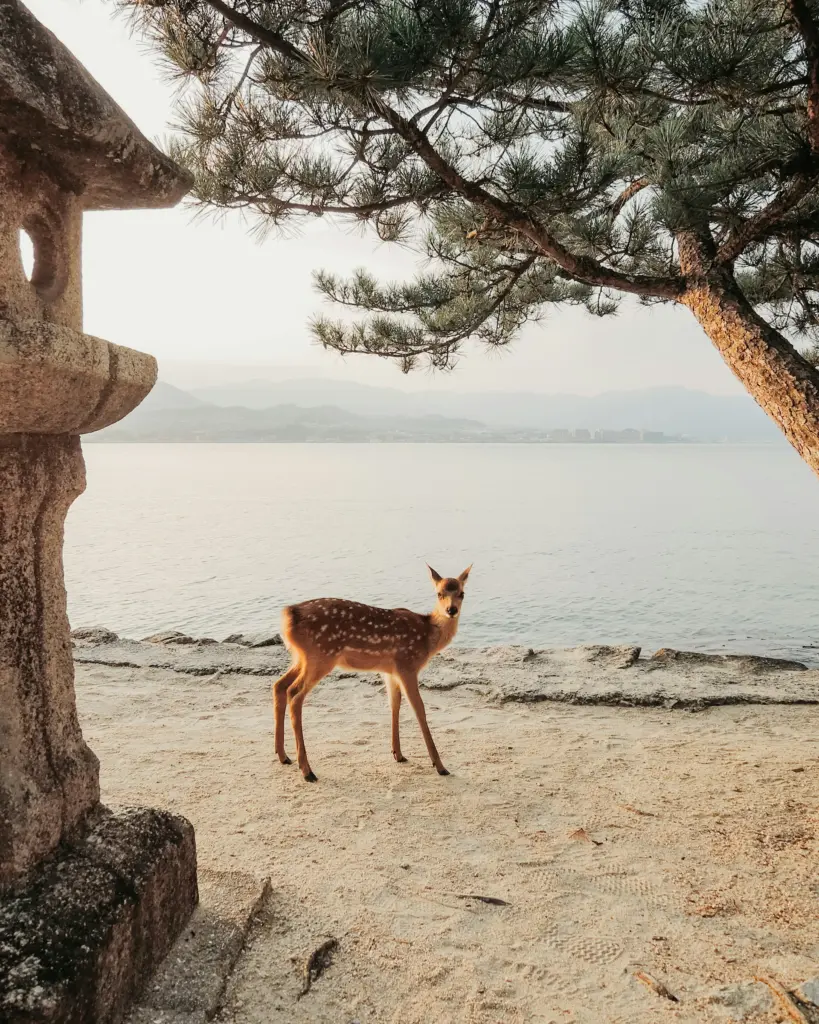
6. Hangout with the Deer
Considered sacred in the Shinto religion, the deer on Miyajima are revered as messengers of the gods. (Just like the deer over at Nara).
This belief stems from a time when Shintoism and Buddhism were deeply intertwined in Japanese culture (and they still are! See: Religious Syncretism), and the presence of these animals adds a spiritual dimension to the island. The deer are so respected that harming them was once punishable by death.
Over the years, the deer have become accustomed to human presence, and it’s not uncommon to see them wandering along the streets, in parks, and near the island’s historical sites. They often approach visitors out of curiosity, and are generally tame and peaceful. Though maybe a bit too playful as one of the deer bit my friend’s skirt that day.
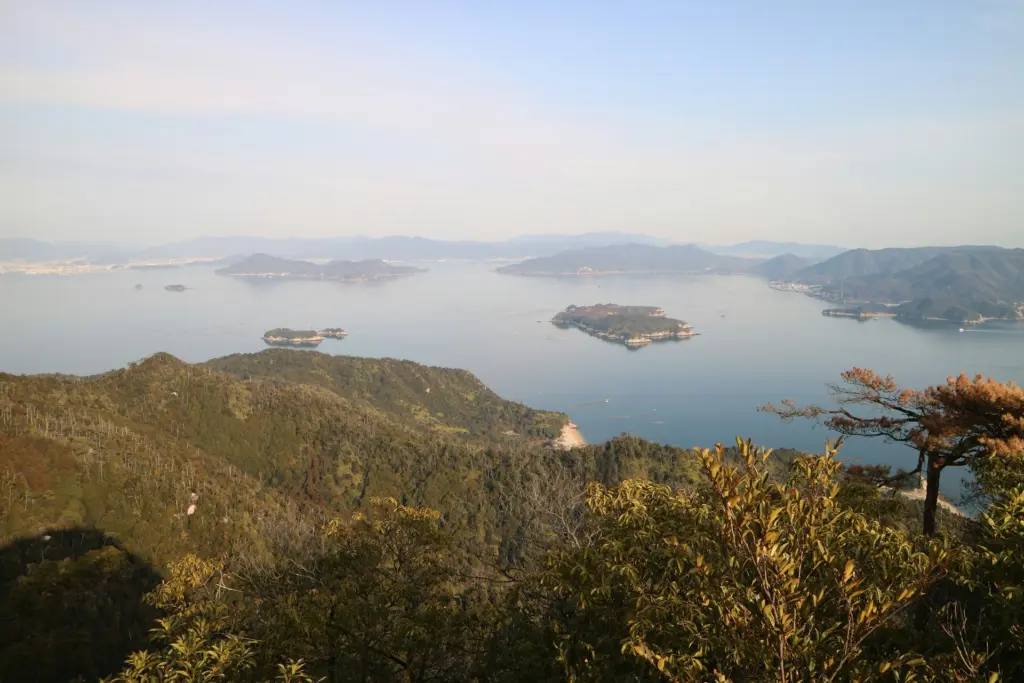
7. Hike Mt. Misen
The highest peak on Miyajima Island, rises 535 m (1,755 ft) above sea level!
Mt. Misen presents several trails that lead to the summit, each offering its own unique sights and challenges. The trails, namely, the Momijidani, Daisho-in, and Omoto paths, meander through lush forests, alongside streams, and past ancient shrines.
The hike typically takes about 1.5 to 2 hours to reach the summit.
Apart from its natural beauty, Mt. Misen is steeped in history and spirituality. It has been a site of religious significance since Kobo Daishi practiced asceticism there in the early 9th century.
The mountain is dotted with various religious sites, including the Misen Hondo and the Reikado (Hall of the Eternal Fire), which houses a flame said to have been lit by Kobo Daishi and has been burning continuously for over 1200 years.
8. Relax at Tsutsumigaura Beach
Stretching along the northern coast of Miyajima, Tsutsumigaura Beach is a spacious, sandy beach that provides a perfect setting for a variety of leisure activities. Whether you’re interested in swimming, sunbathing, or just enjoying a leisurely stroll along the shore, the beach offers a tranquil environment to unwind and soak in the natural beauty of the surroundings.
Apart from its natural allure, Tsutsumigaura Beach also offers camping facilities, making it a great spot for an overnight stay. The Tsutsumigaura Nature Park, adjacent to the beach, includes a campground where you can set up tents and enjoy a night under the stars. The park also has rental cabins for those who prefer a more comfortable accommodation option.
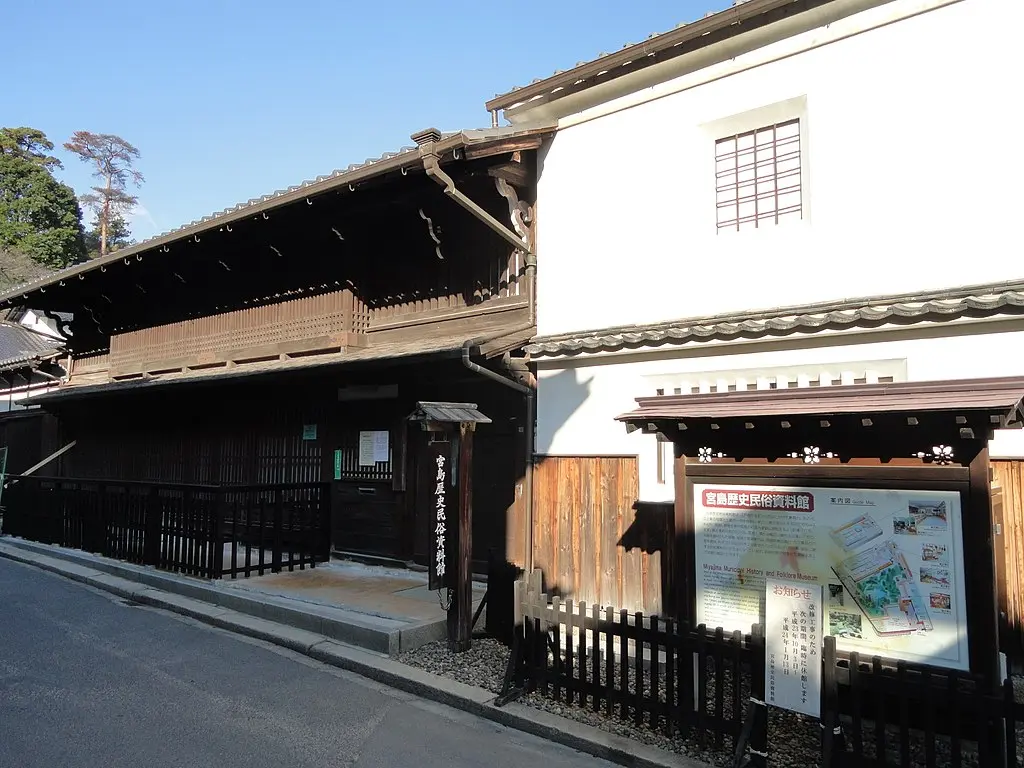
9. Visit the Miyajima History and Folklore Museum
The Miyajima History and Folklore Museum is located in a traditional wooden building that was once a private residence, this museum provides an intimate look at the life and history of Miyajima, far beyond its famous torii gate and shrines.
The museum’s collection comprises a variety of exhibits that showcase the island’s past, including historical documents, folk art, and everyday items used by the local people throughout the centuries.
The museum also delves into the island’s folklore, which are integral to understanding its spiritual significance. Stories passed down through generations, are brought to life through engaging exhibits.
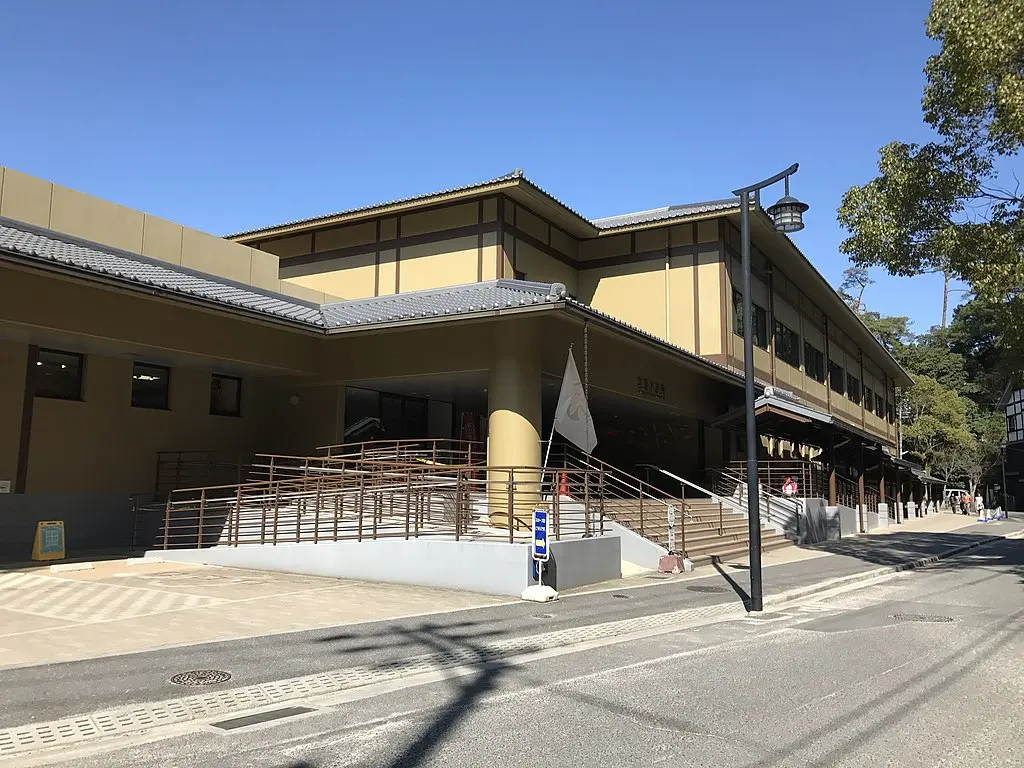
10. Enjoy at Miyajima Public Aquarium
The Miyajima Public Aquarium is a modern aquarium, rebuilt and reopened in 2011.
The aquarium is designed to provide a journey through different aquatic environments. It features a variety of exhibits, including tanks that replicate the natural habitats of various species, from the local waters of Hiroshima Bay to the tropical seas. You can marvel at a wide range of marine creatures, including colorful fish, jellyfish, rays, and sea turtles.
Another notable feature is the aquarium’s emphasis on conservation and environmental education. It aims to raise awareness about the importance of preserving marine ecosystems and the challenges faced by marine species.
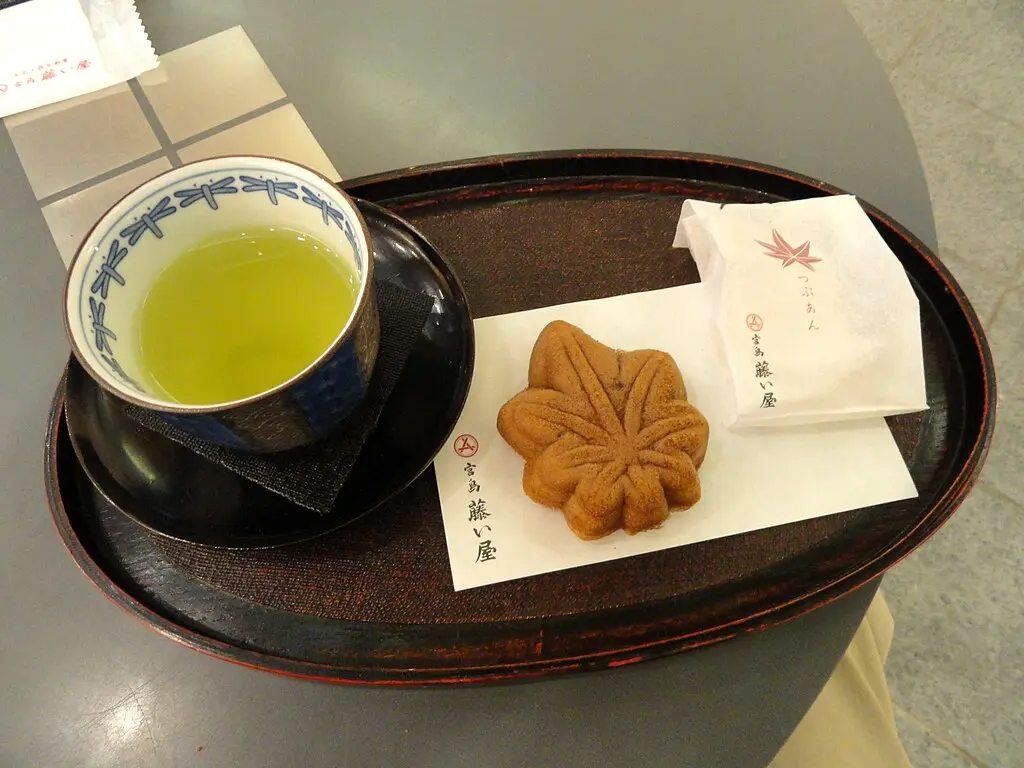
11. Eat Momiji Manju at Okinadou
Momiji Manju is a maple leaf-shaped cake, typically filled with sweet red bean paste, a staple in Japanese sweets. The cake’s design is inspired by the abundant maple trees on Miyajima Island. Over time, various other fillings have become popular, such as custard, chocolate, and even cheese!
Okinadou is one of the most renowned shops on Miyajima for Momiji Manju. Established over a century ago, Okinadou has perfected the art of making these delightful treats. So visiting the shop offers not just a chance to taste these famous cakes but also to witness their preparation.
Many shops on the island, including Okinadou, have open kitchens where visitors can see the Momiji Manju being made fresh.
The warm, freshly made Momiji Manju from Okinadou is a sensory delight, with its soft, fluffy texture and the sweet, rich filling that complements the subtle flavor of the cake. Pairing it with a cup of green tea is a traditional way to enjoy this treat and makes for a perfect snack while exploring the island.
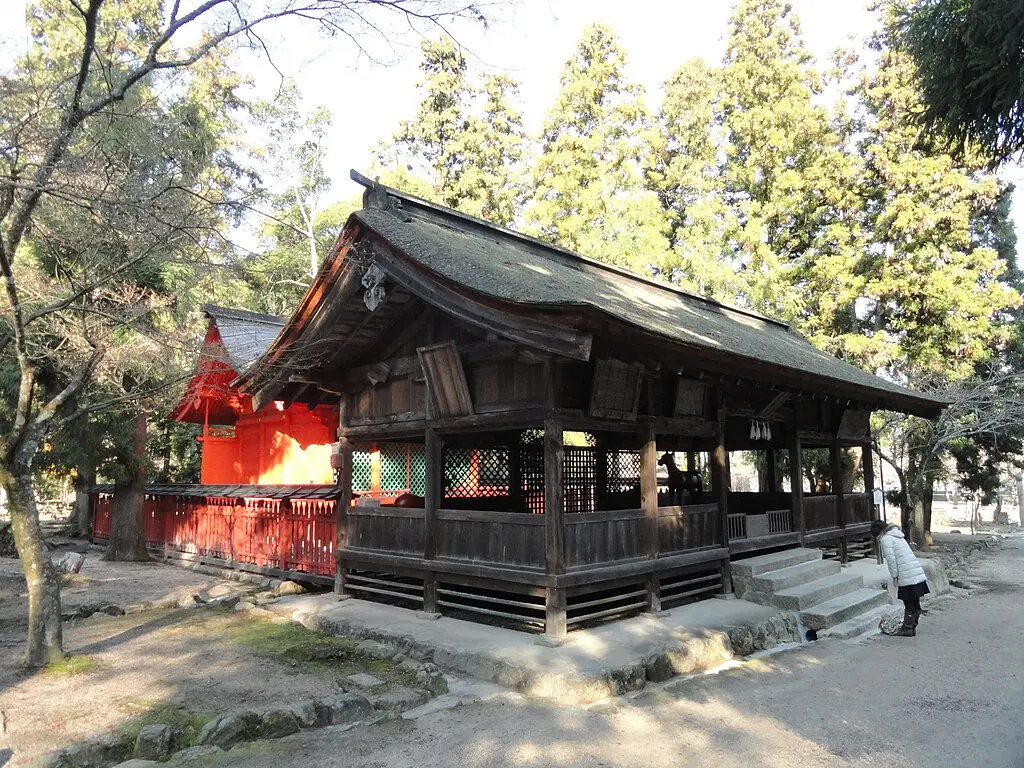
12. Pray at Omoto Shrine
Nestled in the Omoto Park area, near the base of Mt. Misen, Omoto Shrine is said to have a history dating back over a thousand years. It’s dedicated to the three Munakata goddesses, revered in Shinto belief as protectors of sea travelers.
The shrine’s architecture is a beautiful example of traditional Shinto design, characterized by its simplicity and harmony with nature.
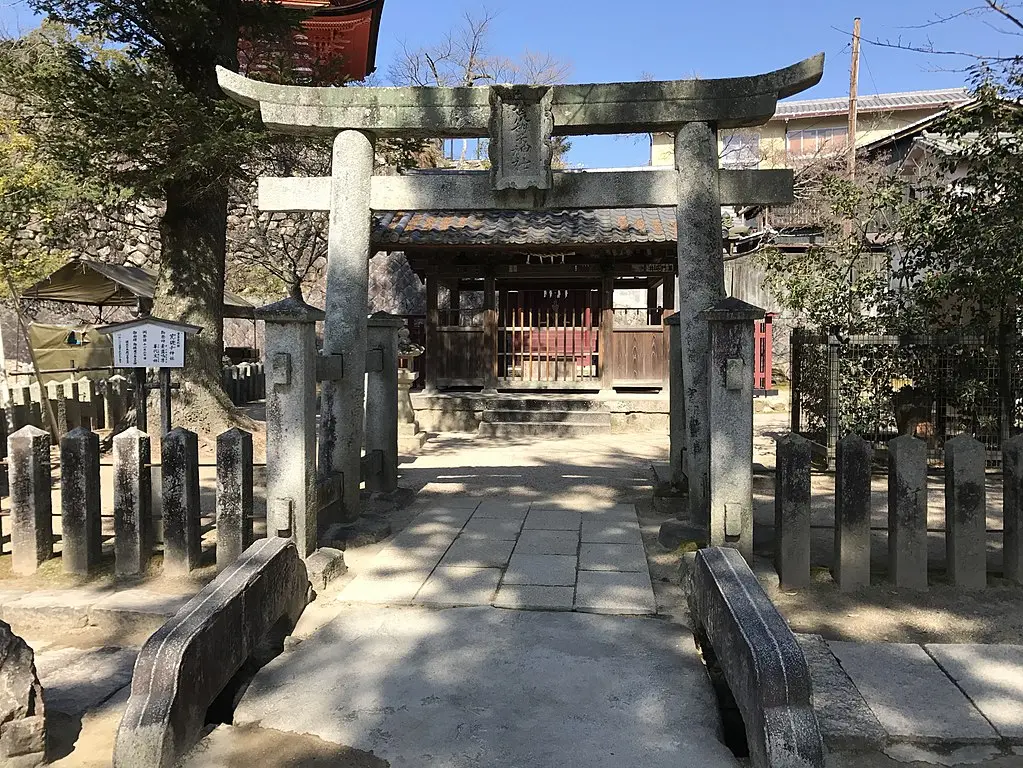
13. Find Araebisu Shrine
The shrine is dedicated to Ebisu, one of the Seven Lucky Gods in Japanese mythology, who is associated with prosperity and the well-being of fishermen.
Araebisu Shrine, with its intimate setting, is a nod to the island’s deep-rooted connection with the sea and its divine protectors just like Omoto Shrine.
14. Take in the Views at Shishiiwa Observatory
Accessible via the Miyajima Ropeway, Shishiiwa Observatory is a must-visit for anyone looking to experience the stunning natural beauty of the island from an aerial perspective.
Upon reaching the observatory, you’ll be greeted with sweeping vistas that extend far across the horizon. The view encompasses the lush forests of Miyajima, the sparkling waters of the Seto Inland Sea, and numerous islands dotting the seascape.
On clear days, you can even see as far as Hiroshima City and the distant mountains.
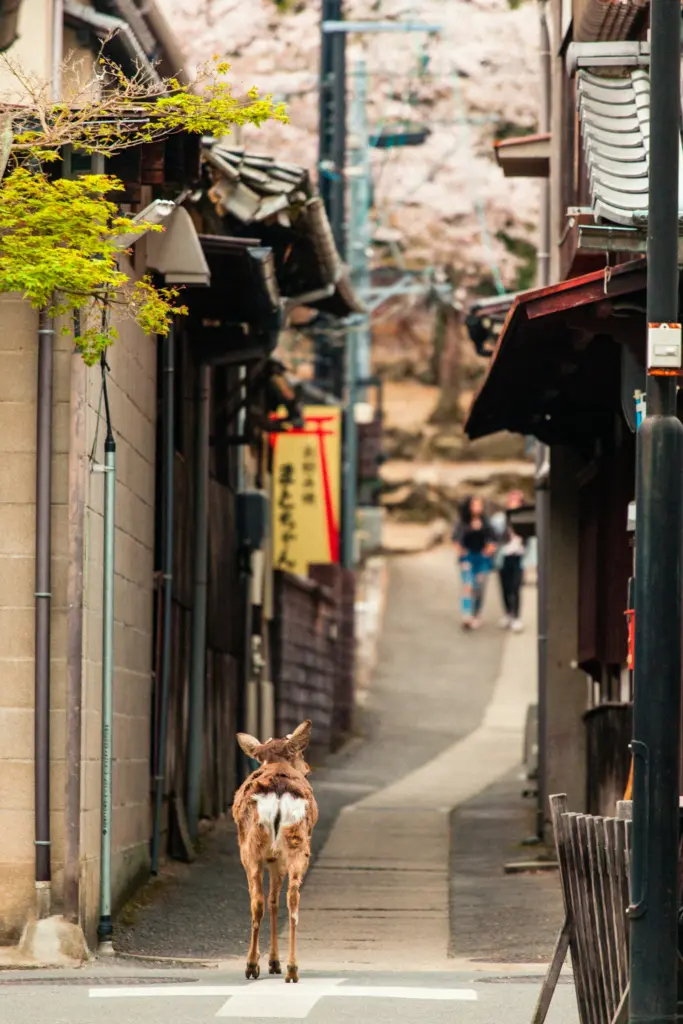
15. Shop at Omotesando Street
Omotesando Shopping Street is a bustling and vibrant thoroughfare that is lined with a variety of shops and eateries, making it a perfect spot to enjoy the local flavors of Miyajima.
Apart from the souvenir shops, Omotesando Street is also home to numerous restaurants and street food stalls. Here, you can indulge in local specialties such as oysters, which Miyajima is renowned for, and other Japanese delicacies such as the aforementioned Momiji Manju.
Where to Stay near Miyajima Island
While there are several hotel options to stay in and around Miyajima, for hostels much of the options are around Hiroshima instead. Here are some of the most recommended places to stay near Miyajima:
Best Hotels on Miyajima:
- Miyajima Grand Hotel Arimoto – offers a mix of sophisticated Japanese-style and Western accommodations, including rooms with tatami floors and futon bedding, as well as carpeted rooms with twin beds, all designed in a minimalistic style with neutral tones. The hotel features amenities such as an outdoor hot spring bath, massage services, and a free shuttle from Miyajima Pier. While Wi-Fi is free in public spaces, guests can also enjoy three distinct dining experiences: Shioji for contemporary Japanese cuisine, Kappo Karaku for a more traditional setting, and a casual noodle restaurant, alongside a coffee lounge and a bar. Additional conveniences include karaoke, a souvenir shop, vending machines, and limited complimentary parking.
- Miyajima Morinoyado – having undergone renovations and reopening in April 2014, offers comfortable guest accommodations and a spacious public bath. The air-conditioned rooms are well-equipped with amenities like flat-screen TVs and personal safes. Morinoyado Miyajima also offers luggage storage and drink vending machines, along with a gift shop selling local goods.
- Miyajima Seaside Hotel – boasts picturesque ocean views and a range of amenities. This hotel offers guests a public bath, karaoke room, and complimentary WiFi in the lobby. Its Japanese-style rooms, adorned with tatami floors and shoji sliding paper screens, are equipped with an LCD TV, mini-fridge, traditional futon beds, a private bathroom, and yukata robes. Dining options include Japanese cuisine for breakfast and a traditional Japanese set menu for dinner.
Best Hostels near Miyajima:
- J-Hoppers Hiroshima Guesthouse – offers both private and dormitory-style rooms, the latter resembling a capsule hotel for enhanced privacy. Private rooms feature traditional Japanese tatami mats and futons, while dorms are equipped with personal amenities like bed lights and plug outlets. Facilities include a communal kitchen, shower rooms, and a cozy common area with a TV lounge and rooftop terrace.
- Guest House Roku – comes with both private rooms with futon bedding and dormitory accommodations, including mixed and female-only options with bunk beds. Facilities include shared bathrooms and toilets, and a communal kitchen where you can cook and share their experiences. Free Wi-Fi, 24-hour bathroom access, free luggage storage and lockers, and a daily welcome drink. Amenities provided include bath towels, face towels, and adaptors.
- WeBase Hiroshima – part of the WeBase Hostel and Hotel group with locations in places like Kamakura and Kyoto, aims to be a community-centered hub connecting young global travelers and locals. The facility offers accommodation with a shared lounge and free WiFi.
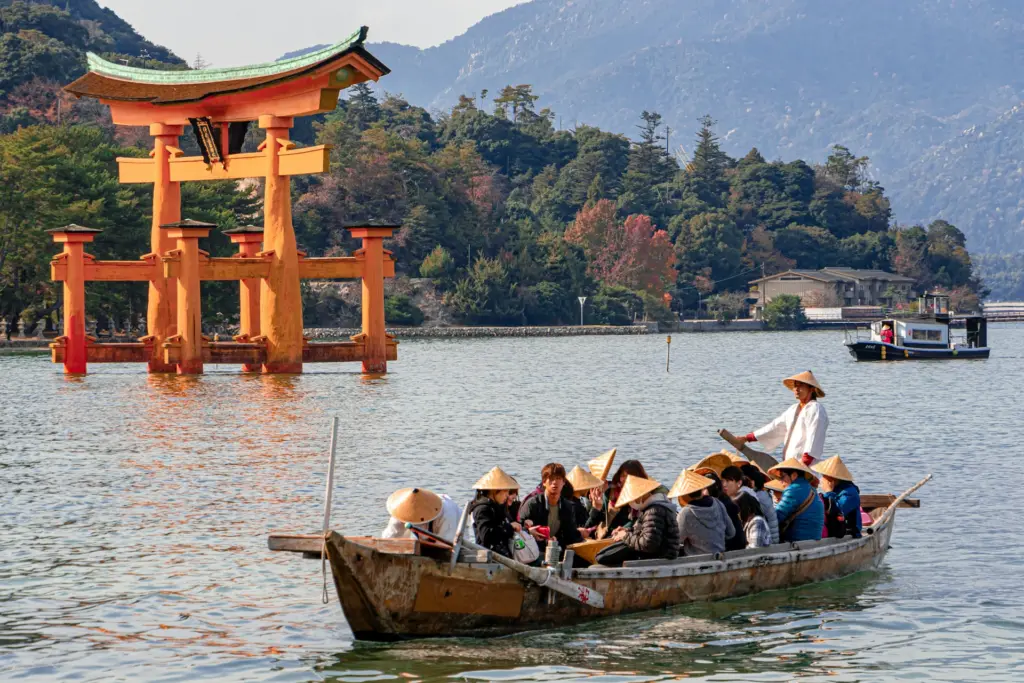
How to Get Around Miyajima Island
Once on the island, most of the key attractions, including the Itsukushima Shrine and the shopping streets, are within walking distance of the ferry terminal.
Miyajima is relatively small and can be easily explored on foot, but rental bicycles are also available if you prefer to cycle around the island.

Best Time to Visit Miyajima Island
One of the best times to visit Miyajima is in Autumn! Particularly from late October through November, afterall, Miyajima is one of Japan’s most stunning maple valleys. During this season, the island transforms into a vibrant canvas of red, orange, and yellow foliage, with its maple trees putting on a spectacular display that is bound to enchant.
Autumn temperatures on Miyajima are pleasantly cool, typically ranging between 10°C – 20°C (50°F – 68°F). This comfortable weather is perfect for exploring the island’s natural sites, such as the lush Momijidani Park, which is renowned for its autumn colors. Momiji itself translates to autumn leaves, you get the idea!
For a truly magical experience, visiting the island during the late afternoon allows you to witness the enchanting sunset against the backdrop of the autumn foliage and Itsukushima Shrine’s torii gate. The setting sun casts a warm glow over the island, accentuating the colors of the leaves and creating a breathtaking scene.
How to Get to Miyajima Island
Reaching Miyajima Island is a straightforward journey from Hiroshima. Here’s how you can get there:
Train and Ferry from Hiroshima: First, take the JR Sanyo Line from Hiroshima Station to Miyajimaguchi Station. The journey takes about 30 minutes. From Miyajimaguchi Station, it’s a short walk to the ferry terminal. At the Miyajimaguchi ferry terminal, you can take either the JR Ferry or the Miyajima Matsudai Kisen Ferry to Miyajima Island. The ferry ride is about 10 minutes and offers beautiful views of the Seto Inland Sea and the island. Both ferry services are frequent, with departures every 15-20 minutes.
Direct Boat Service from Hiroshima Peace Memorial Park: For a more scenic and direct route, you can take a boat from the Hiroshima Peace Memorial Park to Miyajima. This option is a bit more expensive but offers a unique and direct view of the island as you approach. The journey takes about 45 minutes.
Plan Your Trip to Hiroshima | Best Travel Resources
Book Your Accommodations
- Booking.com – the world’s leading online booking platform for accomodations around the world, they have an extensive amount of available listings with zero booking fees and best price guarantees.
- Hostelworld – a backpacker’s best friend, Hostelworld has the largest collection of hostels and guesthouses for affordable prices.
Don’t Forget Insurance
- SafetyWing – from Nomad Insurance, an insurance by nomads for nomads. They understand our lifestyle well and have really comprehensive and flexible plans that cater to any traveler.
Find Cheap Flights
- Kiwi.com – my go-to for booking and finding the cheapest flights and it’s helped me save tons of money. They do virtual interlining which is connecting flights from airlines that do not codeshare, so you can find routes that you wouldn’t be able to find normally.
Join Tours & Activities
- GetYourGuide – is one of the best places to find unique tours and activities. I found that it’s an excellent way to meet fellow travelers and create fond memories. They are not only limited to tours as they also offer niche services such as skip-the-line tickets or private transfers.
Catch a Ride
- Rentalcars.com – nothing beats the freedom of the road, Rentalcars.com is the world’s largest online car rental service. They operate across 160 countries so they’re the perfect partner to work with if you find yourself wanting a ride.

